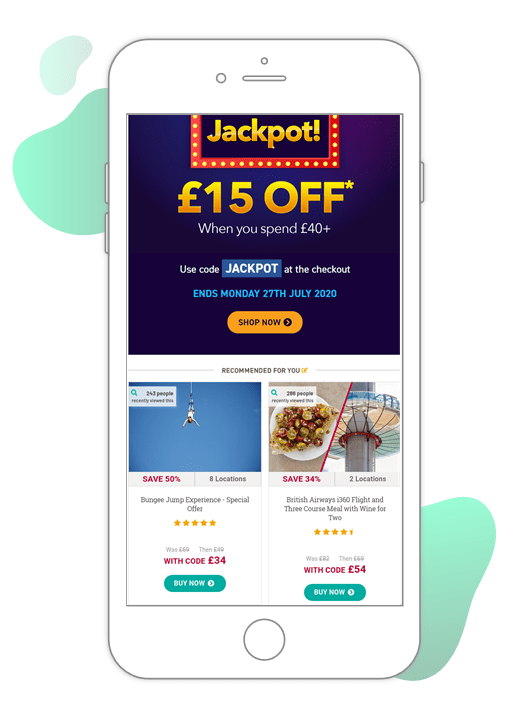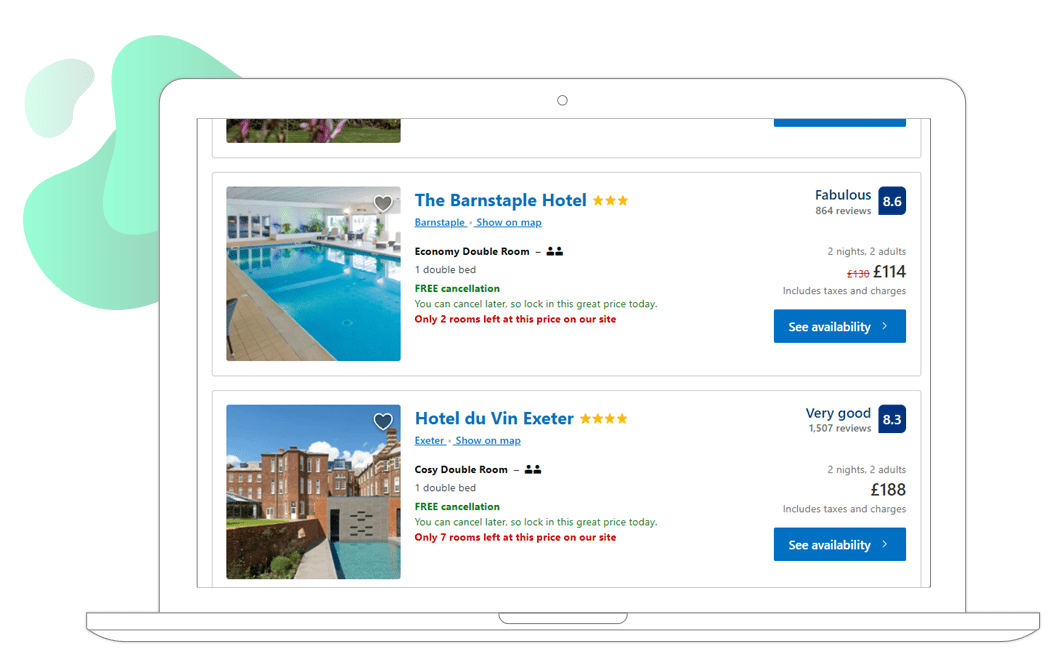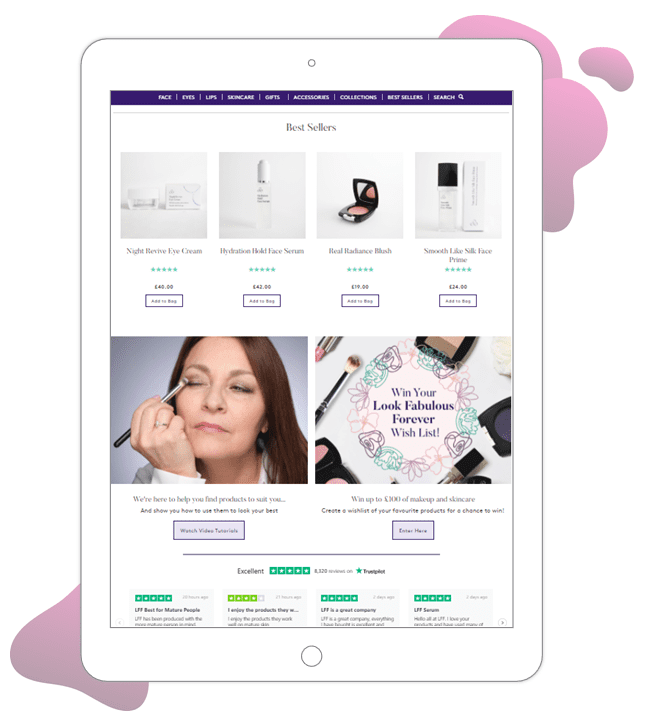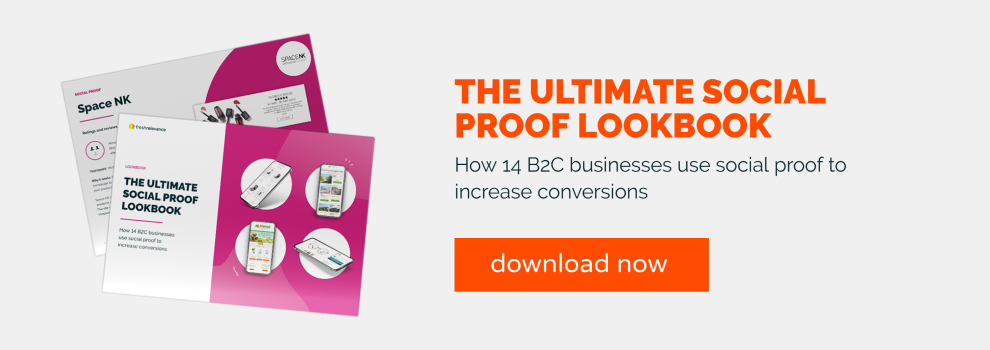An increasing number of consumers have headed online for their shopping needs over the past year. Now it’s up to eCommerce stores to build trust, reduce purchase anxiety and convert those shoppers into customers.
The best way to do this is with social proof.
Social proof describes the various ways marketers can increase conversions by reassuring customers that they are buying the right product. Key tactics include ratings and reviews, popularity messaging, and crowdsourced product recommendations.
When used effectively, social proof has the power to improve the customer journey, increase conversions and build trust in your brand.
Read on for 3 social proof tactics to increase conversions and find out how 14 B2C businesses use social proof to generate results in our Ultimate Social Proof Lookbook.
1) Ratings and reviews
Our research shows that almost 2 out of 3 consumers (61%) find detailed product reviews useful when making a purchase and over half of consumers (56%) look for star ratings when making a decision. So it pays to include these tactics across the customer journey to reassure shoppers at every stage of the decision-making process.
Try including star ratings alongside product recommendations to peak shoppers’ interest and encourage click throughs. And be sure to filter those recommendations by a minimum star threshold to make sure you showcase your top performers.
Buyagift boosts the conversion rate of their automated discount emails by showing ratings alongside each experience and product promoted. Since implementing product ratings and other high converting social proof tactics to their automated emails, Buyagift has seen a 13% increase in sales.

Source: Buyagift email
2) Stock levels
Almost half of consumers (43%) say information on how many items are still in stock is a key consideration when making a purchase.
Displaying stock level information can be particularly effective for items that have fixed availability, such as hotel rooms.
Booking.com boosts urgency by displaying how many rooms are available for the shopper’s preferred dates, speeding up the purchase process for shoppers who want to secure their getaway.

Source: Booking.com
3) ‘Top seller’ product recommendations
Almost 1 in 4 consumers (22%) say ‘top seller’ product recommendations have persuaded them to make a purchase.
Try using top seller product recommendations on your homepage to help guide first-time visitors to your site to your product pages.
Look Fabulous Forever greets their shoppers at the homepage with bestseller product recommendations, showing them that these are highly rated products worth checking out.

Source: Lookfabulousforever.com
Without the ability to touch and try out products, shoppers are more likely to experience anxiety around purchasing. And with so many of your competitors available at the touch of button, you don’t want to give shoppers any reasons to jump ship. So make sure you pull out all the social proof stops to ease shoppers’ minds and reassure them that their products or services are trustworthy.
If you haven’t got any social proof tactics implemented or you’re in need of a revamp, the three tactics presented here are a great place to start. Reassure shoppers with ratings and reviews, boost urgency with low stock warnings, provide guidance with top seller product recommendations, and watch your conversions soar.
Discover more tactics and find out how 14 B2C businesses use social proof to generate results in our Ultimate Social Proof Lookbook.







